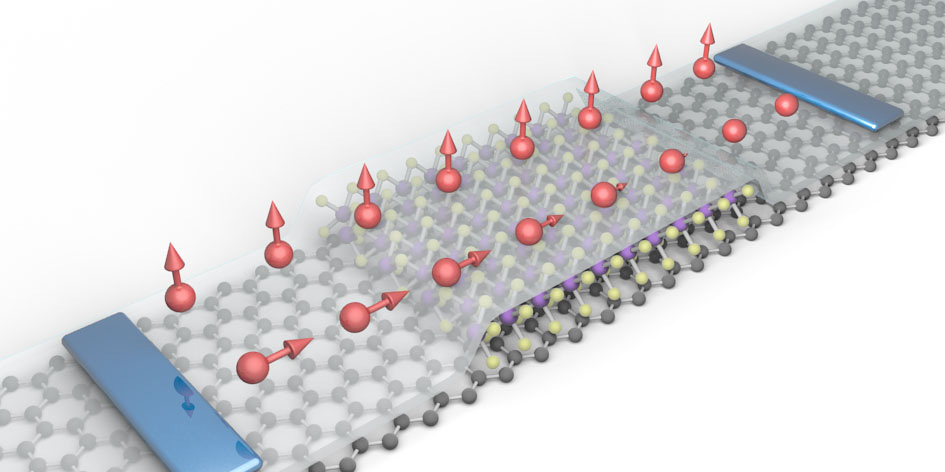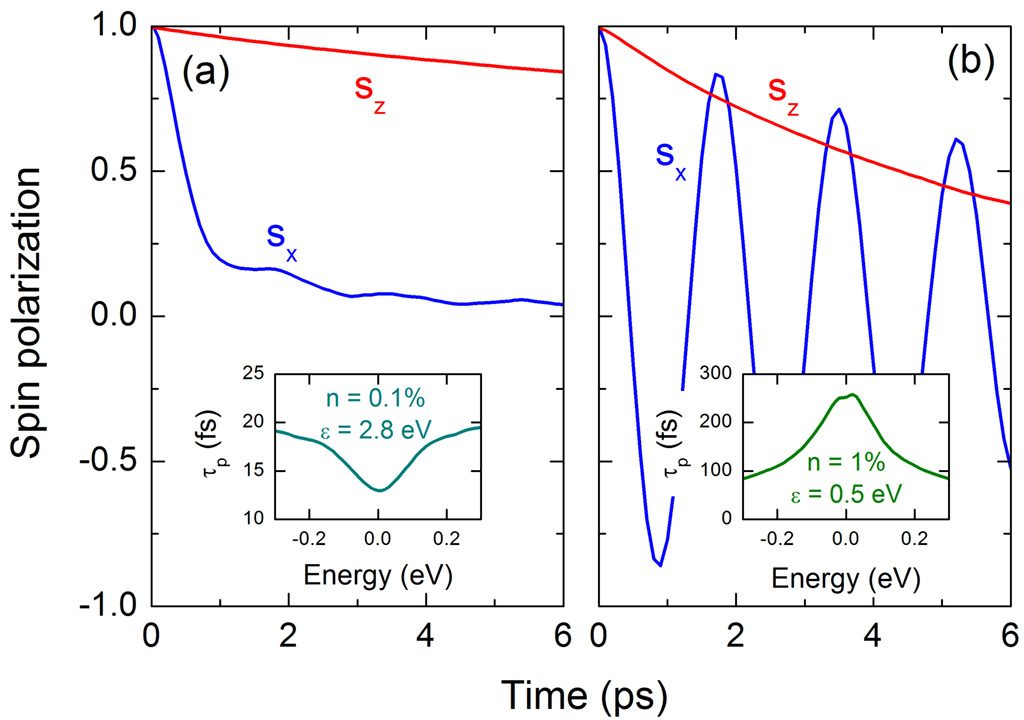Spin relaxation is the process whereby the spins in a spin current lose their orientation, reverting to a natural disoriented state. This causes spin signal to be lost, since spins are only useful for transporting information when they are oriented in a certain direction.
Graphene is a two-dimensional material exhibiting a series of remarkable properties that makes it uniquely suited for maintaining spin orientation over long lifetimes. However, its low spin-orbit coupling (SOC) makes it ineffective for spin manipulation.
The solution we have proposed to advance in the development of graphene spintronics is to create layered heterostructures, harnessing the the presence of a high SOC material (such as a transition-metal dichalcogenide-TMDC) which imprints new spin features in the graphene layer. Our theoretical work reveals that the rate at which spins relax in graphene/TMDC systems depends strongly on whether they are pointing in or out of the graphene plane, with out-of-plane spins lasting tens or hundreds of times longer than in-plane spins. Such a high ratio has not previously been observed in graphene or any other 2D material, and stands as a primer in controlling the spin degree of freedom using weak proximity effects
This behaviour is mediated by the so-called spin-valley locking induced in graphene by the TMDC, which ties the lifetime of inplane spin to the intervalley scattering time (induced by disorder). This causes in-plane spin to relax much faster than out-ofplane spin. Furthermore, the numerical simulations suggest that this mechanism should come into play in any substrate with strong spin-valley locking, including the TMDCs themselves.
Effectively inducing a spin filter effect –the ability to sort or tweak spin orientations–, these findings evidences that it is possible, through proximity effects to manipulate spin information in graphene. This theoretical prediction has been just confirmed experimentally at ICN2. These results open new avenue for exploring innovative spin logics protocols and quantum computing paradigms based on this large class of two-dimensional materials.
References

